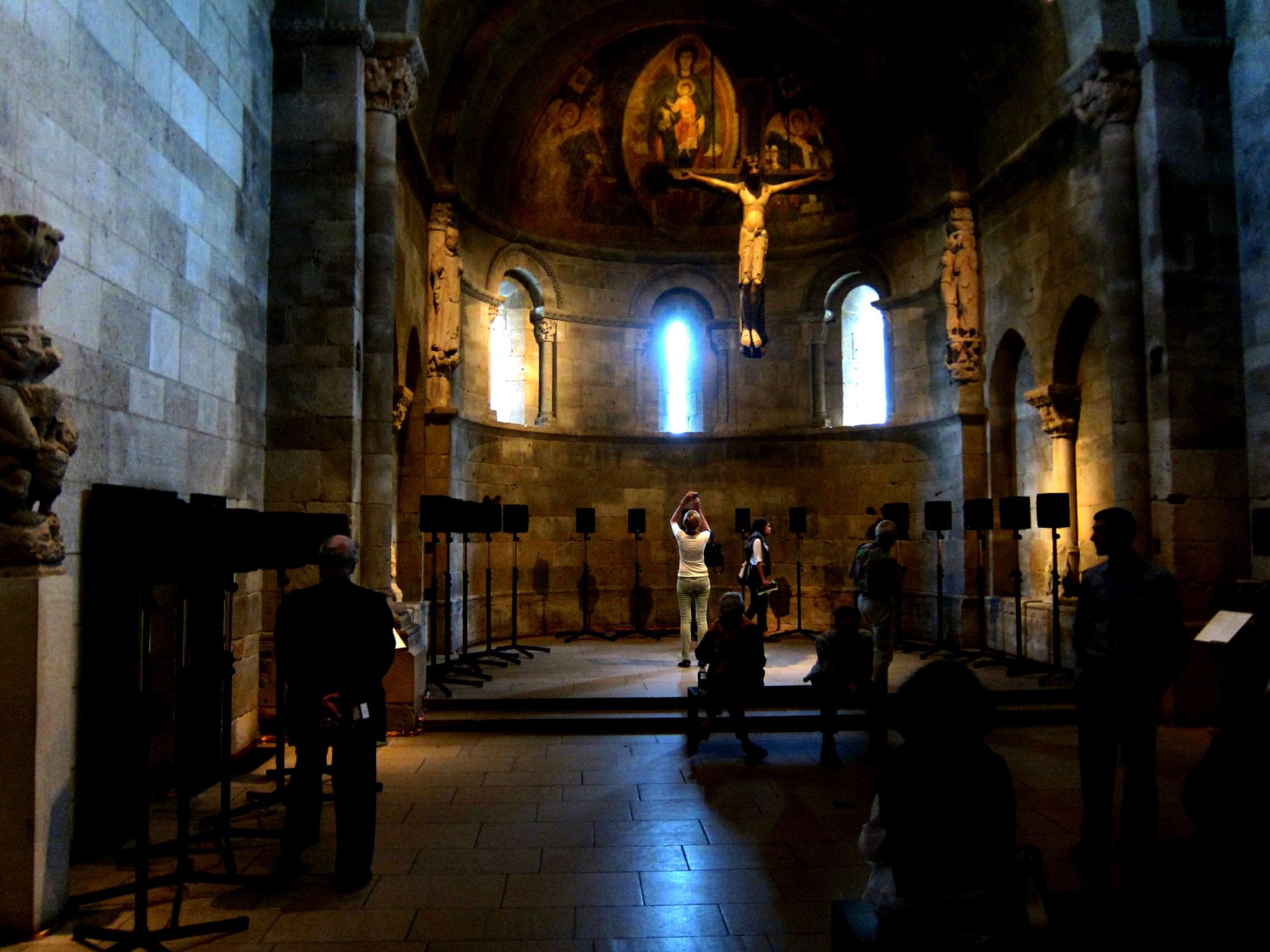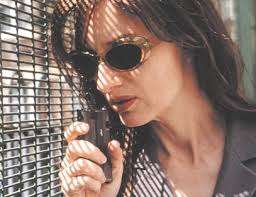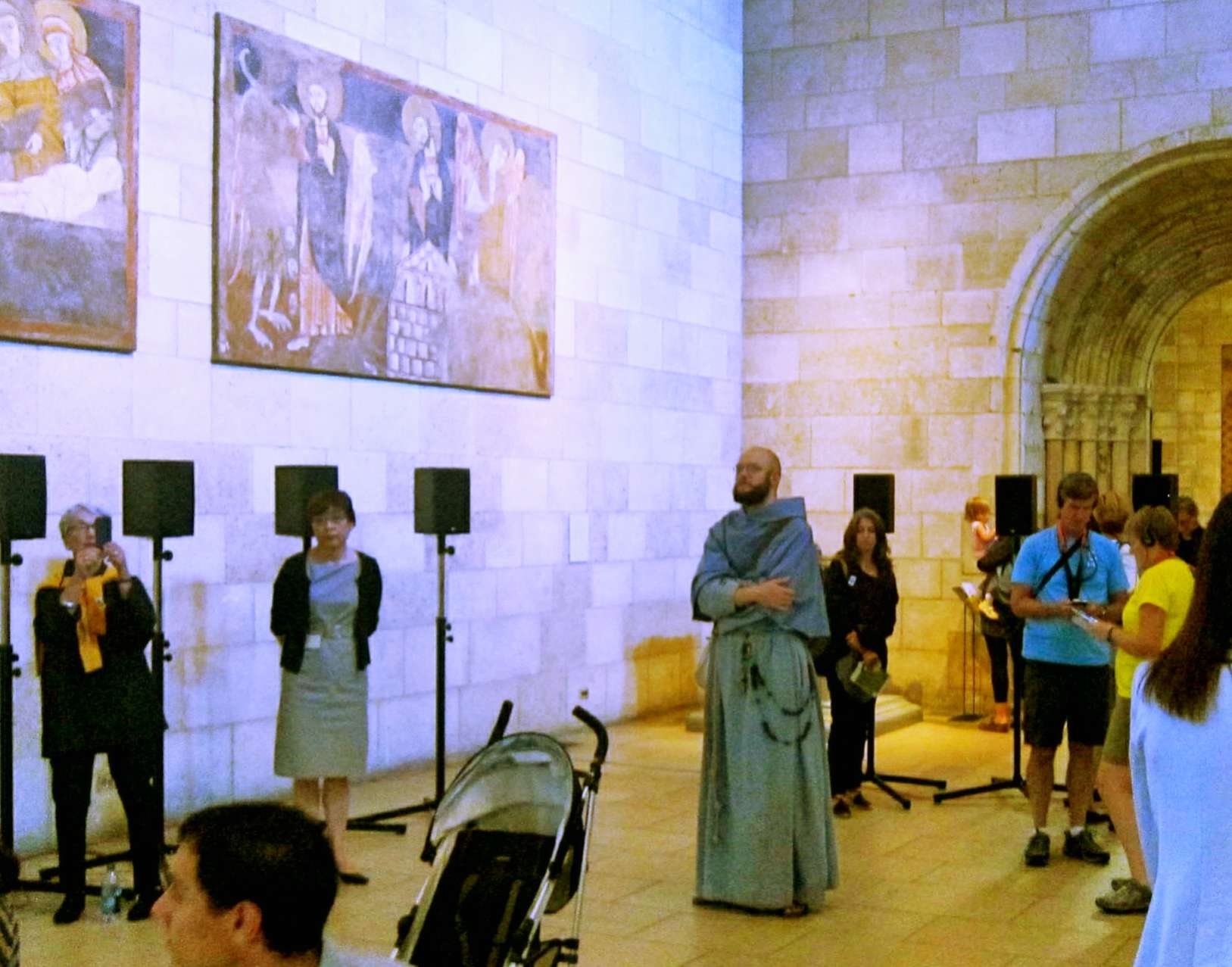|
Back
A Miracle in the Age of Reason New York
Funteduena Chapel, The Cloisters, Fort Tryon Park
09/09/2013 - September 10-December 8, 2013
Sir Thomas Tallis: Spem in Alium
Salisbury Cathedral Choir, Janet Cardiff (Sound Installation)

Funteduena Chapel (© Coco T. Dog)
High atop a hill in northern New York City, The Cloisters is celebrating its 75th Anniversary. Or its 100th anniversary. Or perhaps its one-thousand and seventy-fifth anniversary.
The question is a metaphysical paradox, since this adjunct to New York’s Metropolitan Museum of Art had taken the (usually) millennia-old crumbling monasteries, chapels, apses, statues, walls, and architectural wonders of Medieval Europe, and rebuilt them into one of the most beautiful sites of the city.
Actually, it started before the First World War, as the dream of an American architect smitten with 13th-century sculpture. Not terribly rich, he traipsed through Europe, amassing neglected tapestries, frescos and old doors from farms and warehouses, later opening a little private museum. In 1934, John D. Rockefeller Jr., hearing of these gems, bought the collection and land on the park, giving it to the Metropolitan Museum of Art to construct buildings to hold them That could have been another museum. Instead, the Met brought back everything they could get their hands on, placing this collection into this dream of the Middle Ages in 1938 New York.
This is no place to describe The Cloister wonders. (For that, you might read one of my pieces at http://theseniortimes.blogspot.com/2011/09/cloisters-evokes-time-when-knighthood.html, or go to metmuseum.org/cloisters.) But ConcertoNet is the place to describe a 75th Anniversary gift, the first “modern” structure ever placed in the building.
Actually, modern doesn’t quite fit it. The gorgeous Funteduena Chapel comes from a Spanish castle built around 1100 A.D. The music is the most famous work by Sir Thomas Tallis, written either for Queen Mary Tudor or Queen Elizabeth I, about 1560. And the sound installation was placed by Janet Cardiff, the Canadian sound artist who was last here with close to 100 loudspeakers in The Murder of Crows at Park Avenue Armory.

J. Cardiff (© Courtesy of the Artist)
Ms. Cardiff uses only 40 speakers here, forming an ellipse around the Chapel, standing against the ancient walls, under the mammoth hanging Crucifix, under the frescos. Taken as a whole, they broadcast an excellent hearing of Sir Thomas’s motet resounding through the Chapel to the outer halls.
Stand anywhere in the Chapel, and the entire grand chorale, sung by the Salisbury Cathedral Choir, is heard en masse as it is supposed to be heard. Edge closer to each speaker, and you hear a single voice, for Ms. Cardiff had recorded each of the 40 voices separately for each speaker. That itself is a revelation. Many years ago, I had the entire score of Spem in Alium which took up virtually half of my room in Hong Kong. It is a mighty tome, but even mightier when listening to every line of the late Renaissance masterpiece.
What is Ms. Cardiff’s goal? “In a concert you are normally seated in front of the choir. In contrast you can experience a piece of music from the viewpoint of the singer...”
And now she goes back to the original metaphysical aspects of The Cloisters.
“By enabling the audience to move freely within the space, the work...it reveals the piece of music as a changing construct. As well, it poses the question of how sound may physically construct a space in a sculptural way and explores how a viewer may choose a path through this simultaneously physical and virtual environment.”
True enough, composers like Varèse and Stockhausen (amongst others) have tried to explode the quantum paradox of time and space in their own ways, with far more complexity than Ms. Cardiff’s uncomplicated conception. But this spatial-tonal exhibition, which has been presented previously in Europe and New York, tries to eschew the cerebral puzzles to go for the liturgical glory of a previous age.

Holy visitor in Cloisters (© Coco T. Dog)
And yes, the sacred vision in the great chapel does indeed make its mark. This pre-opening was supposed to be for the Press. But as we wandered around, a tall figure dressed in the Robes of Monastic Brother entered through the great door of the Chapel. I didn’t know his Monastic order, but opined hat he was a Franciscan monk, so beatific was his face in this great hall.
The Brother entered, listened to the nine-minute motet, and his face glowed with happiness. When it was finished, he glided out. Perhaps (Videte miraculum!), he has lived in the Funteduena Chapel for its thousand-odd years, and appears only for special celebrations.
In our secular Age of Reason, the miracle of The Cloisters offers yet one more vision from the eternal Ages of Belief.
Harry Rolnick
|